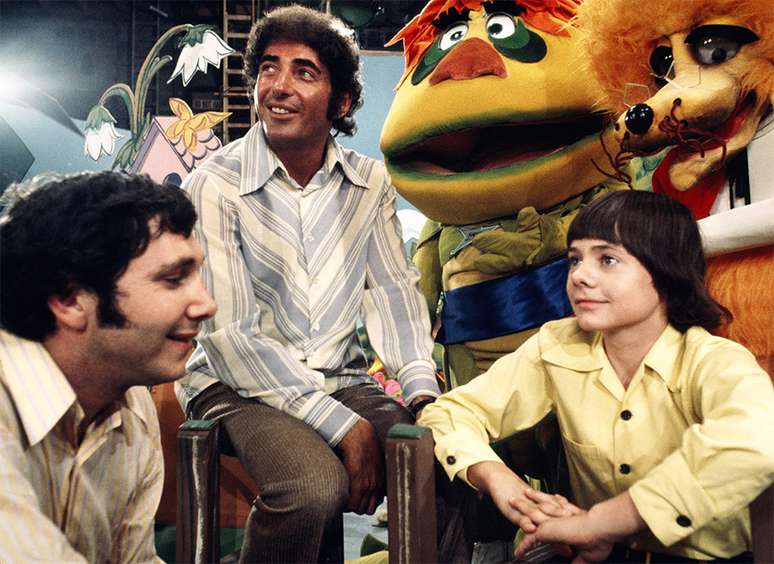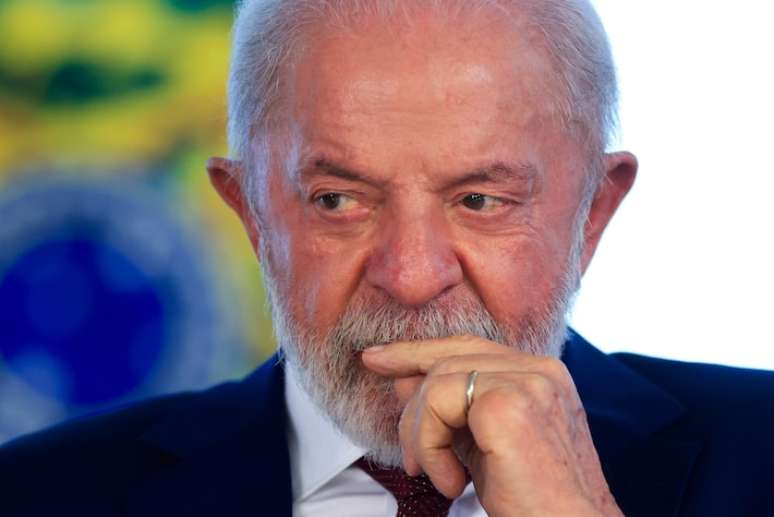Marty Krofft, one of the most influential names in children’s television programming, died on Saturday (11/25) at the age of 86, the victim of kidney failure. Partnering with his brother Sid, Marty created an entertainment empire, setting the pace with such unforgettable shows as “Banana Splits” and “The Missing Link.” Born in Montreal on April 9, 1937, Marty found in puppetry, together with Sid, a path to creativity and innovation.
Banana split
The Krofft brothers began their careers as puppeteers and were soon recruited by the NBC network in 1968 to create costumes for the live-action portion of “Banana Splits.”
Psychedelic and innovative, the series featured animated segments and a series of live-action adventures (“Peril Island”) anchored by the introduction of four charismatic characters: Fleegle the dog, Bingo the gorilla, Drooper the lion, and Snorky the elephant. The Kroffts’ genius manifested itself in the creation of these unique characters and in the design of their costumes. Each character had a distinct personality and, together, they formed a rock band that enchanted children – and fronted the Uvas Azedas club – every Saturday morning from 1968 to 1970. The series made history by introducing a new entertainment format, with cartoon presenters animated and musicals. context, setting a standard for future children’s programs. Repeated for several decades, it is still remembered today.
The Magic Flute and Sea Monsters
The success of “Banana Splits” opened the door for the brothers to create “The Magic Flute” (HR Pufnstuf) in 1969, a series about a boy shipwrecked on a magical island, which at the time represented another significant advance in television for children. Combining actors and characters with whimsical costumes and a colorful set, the production was another psychedelic explosion on the small screen.
The story revolves around Jimmy, a young man who arrives on a magical island after being attracted by Witchiepoo, an evil witch, who wants to steal his magical talking flute. Upon arrival, Jimmy meets Pufnstuf, a friendly dragon and mayor of the island, who helps him try to return home by protecting his magic flute. Despite this, Jimmy never left the island, as the series was canceled after 17 episodes.
They then created “Buggaloos” (1970), about a rock band made up of insects, and “Lidsville” (1971), in which a teenager ends up in a world of sorting hats. Both were innovative and often surreal, but the best was yet to come.
In 1973, the Kroffts returned to supernatural fantasy with a dynamic and visual project similar to “The Magic Flute”: “Sigmund and the Sea Monsters.” The series followed Sigmund, a friendly sea monster who was kicked out of his home by his family because he didn’t want to scare humans. He soon finds friendship with two surfer brothers, Johnny and Scott, who hide him in their secret club. The series explored themes such as acceptance, friendship and the importance of being true to yourself, all in a playful and colorful setting. It lasted two seasons, until 1975, when Marty and Sid were already prioritizing their most remembered attraction.
The missing link
Launched in 1974, “The Land of the Lost” was the Kroffts’ most ambitious project and represented another milestone in children’s programming. Set in a prehistoric world, the adventure series chronicled the adventures of the Marshall family, who, after an accident during a boat ride, ended up in an unknown land inhabited by dinosaurs, the mysterious Pakuni (hominids with their own language and culture) and fearsome Sleestak (intelligent humanoid reptilians who hunted them). The mix of live action and innovative special effects for the time made the attraction a visual phenomenon.
The production stood out for its pioneering use of special effects and animatronics, especially in the creation of the dinosaurs and Sleestaks. This approach led the audience to follow the Marshall family’s journey to find their way home. Along with the adventure, the plot featured themes such as cooperation, resilience, and the importance of knowledge and innovation. Additionally, each character in the Marshall family – Rick, Will and Holly – had their own strengths and vulnerabilities, creating a family dynamic like few other series of the time.
With three seasons, “The Missing Link” wasn’t just a ratings success. It has become a significant cultural fixture, demonstrated by its enduring popularity, reruns, adaptations, and continued presence in pop culture.
Other projects
In addition to these flagship productions, the Kroffts produced a variety of other programs in the 1970s, including the science fiction film “The Lost Saucer” and “Far Out Space Nuts” in 1975, and several sitcom spin-off projects” The Brady Bunch.” Brady Bunch). Highlights of the list include “Electra Woman and Dyna Girl,” a series of disco-era, crime-fighting superheroines in elegant costumes, and “Dr. Shrinker,” about a mad scientist who invents a shrinking ray and shrinks a group of young people. Both were screened in 1976 and, although not repeating the success of their predecessors, they also influenced subsequent productions.
In the 1980s they tried to vary their productions with “Pryor’s Place”. Launched in 1984, the attraction was set in an urban environment and starred the famous comedian Richard Pryor. Blending humor, music and puppetry to address important issues such as bullying and inclusion, the production was another pioneering initiative by the Kroffts, rewarded with an Emmy nomination. But having a star known for adult humor on a children’s program was considered too risqué for conservative audiences, meaning it only lasted one season.
On the other hand, soon after the brothers achieved one of their greatest and most innovative successes, combining puppetry and political satire. Unlike children’s productions, “DC Follies” was Krofft’s first program aimed at adult audiences. The episodes were set in a fictional tavern in Washington, D.C., where puppets of well-known political figures interacted with the human bartender, played by Fred Willard. The characters represented real political figures, such as presidents and journalists, and the series commented, in a humorous way, on the events and politics of the time. It ran for two seasons, from 1987 to 1989, and received two Emmy nominations.
Airing in the early 1990s, “Toby Terrier and His Video Pals” was the Kroffts’ attempt to keep up with technological changes. The series revolved around Toby Terrier, an animated dog, and his friends, and was one of the first to incorporate interactivity, using special technology that allowed children to interact with the program through a specific toy. Once again they have proven that they are ahead of their time.
Latest productions
They spent several years making themed specials and musical shows before landing another original series, “Mutt & Stuff,” which launched in 2015 on Nickelodeon. This children’s program focused on Cesar Millan, known as the “Dog Whisperer”, and his son Calvin, in a setting populated by both real dogs and canine puppets. With an educational slant, the program taught children valuable lessons about caring for animals, friendship and respect for diversity. Its two seasons were nominated for four Emmy Awards.
In recent years, the Kroffs’ classic catalog has also been revisited in several remake projects, from the film “The Missing Link” (2009), with Will Ferrell and Danny McBride, to the series “Sigmund and the Sea Monsters” (2016). on Amazon, without forgetting a trashy horror starring the characters from 2019’s “Banana Splits”.
Marty Krofft’s legacy extends far beyond the programs he created. A producer and screenwriter, he has inspired generations of content creators and was honored, along with his brother Sid, with a special lifetime achievement award in 2018 at the Daytime Emmy, the top award for daytime programming on American TV.
Still alive, his older brother greeted him on social media with an emotional message. “I am heartbroken over the loss of my little brother. I know how much you all meant to him. You were the ones who made all this possible. Thank you for being with us all these years. Love, Sid.”
Below we recall the opening of some classic series conceived with the creativity of the Kroffts.
Source: Terra
Rose James is a Gossipify movie and series reviewer known for her in-depth analysis and unique perspective on the latest releases. With a background in film studies, she provides engaging and informative reviews, and keeps readers up to date with industry trends and emerging talents.







